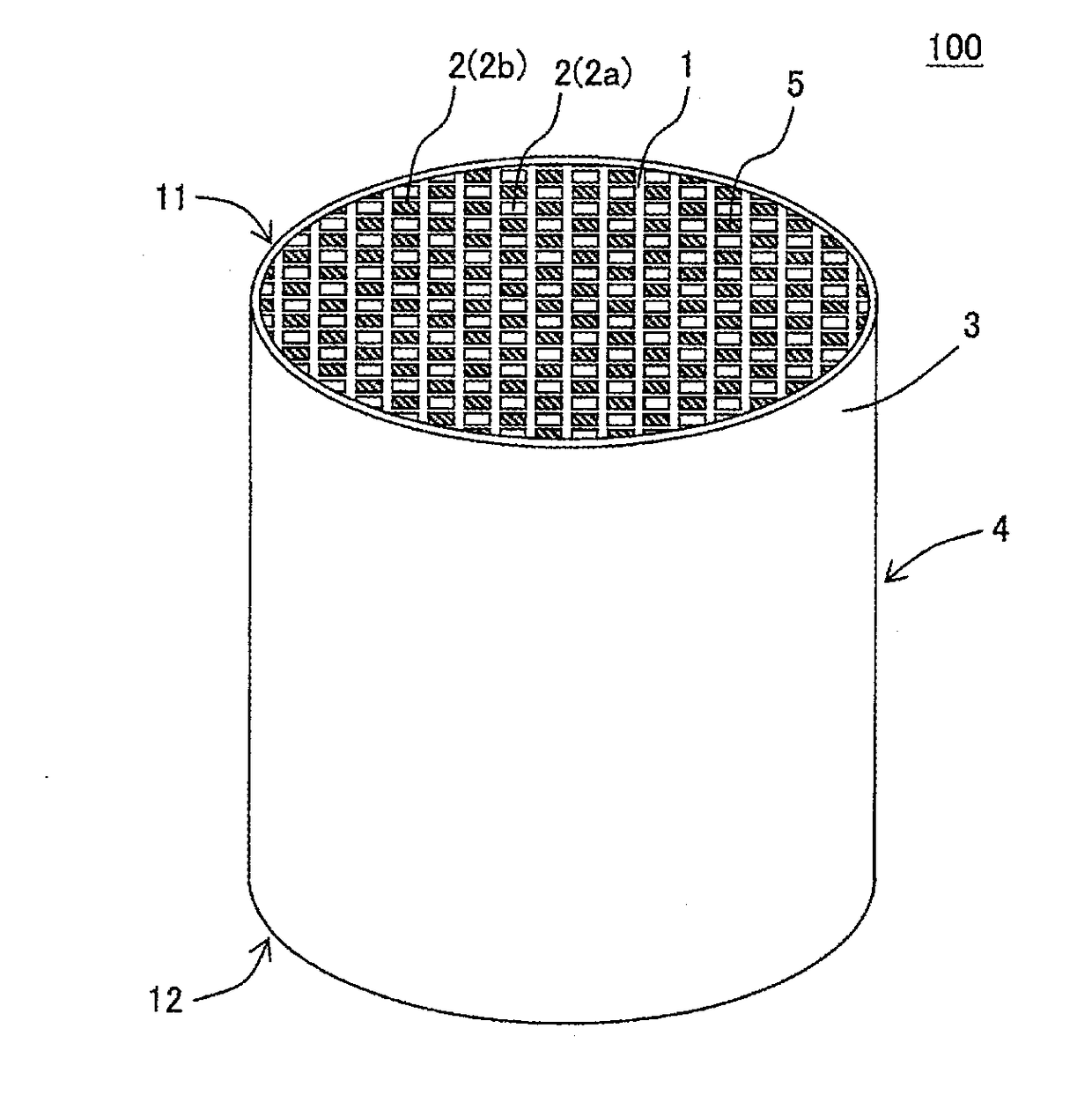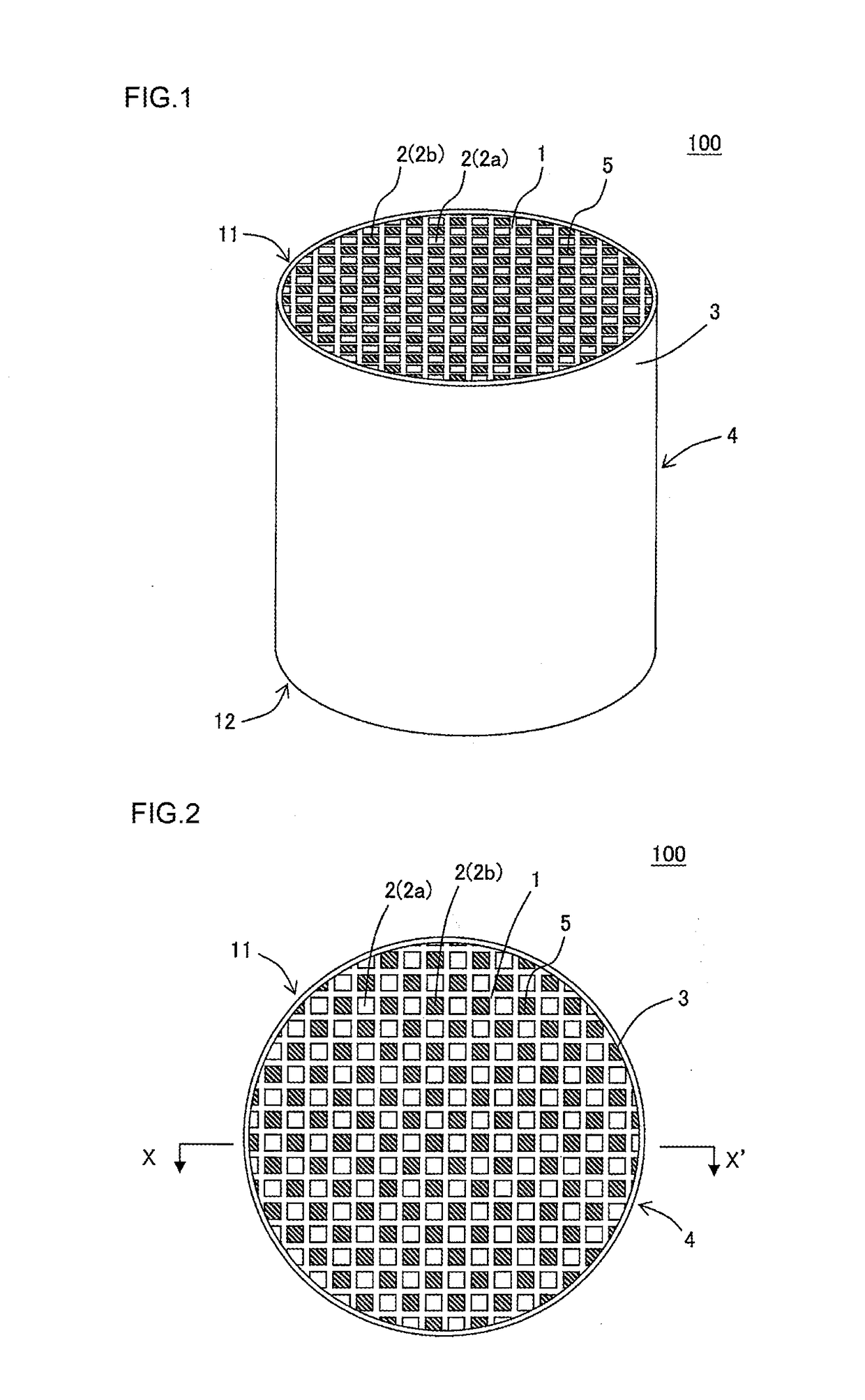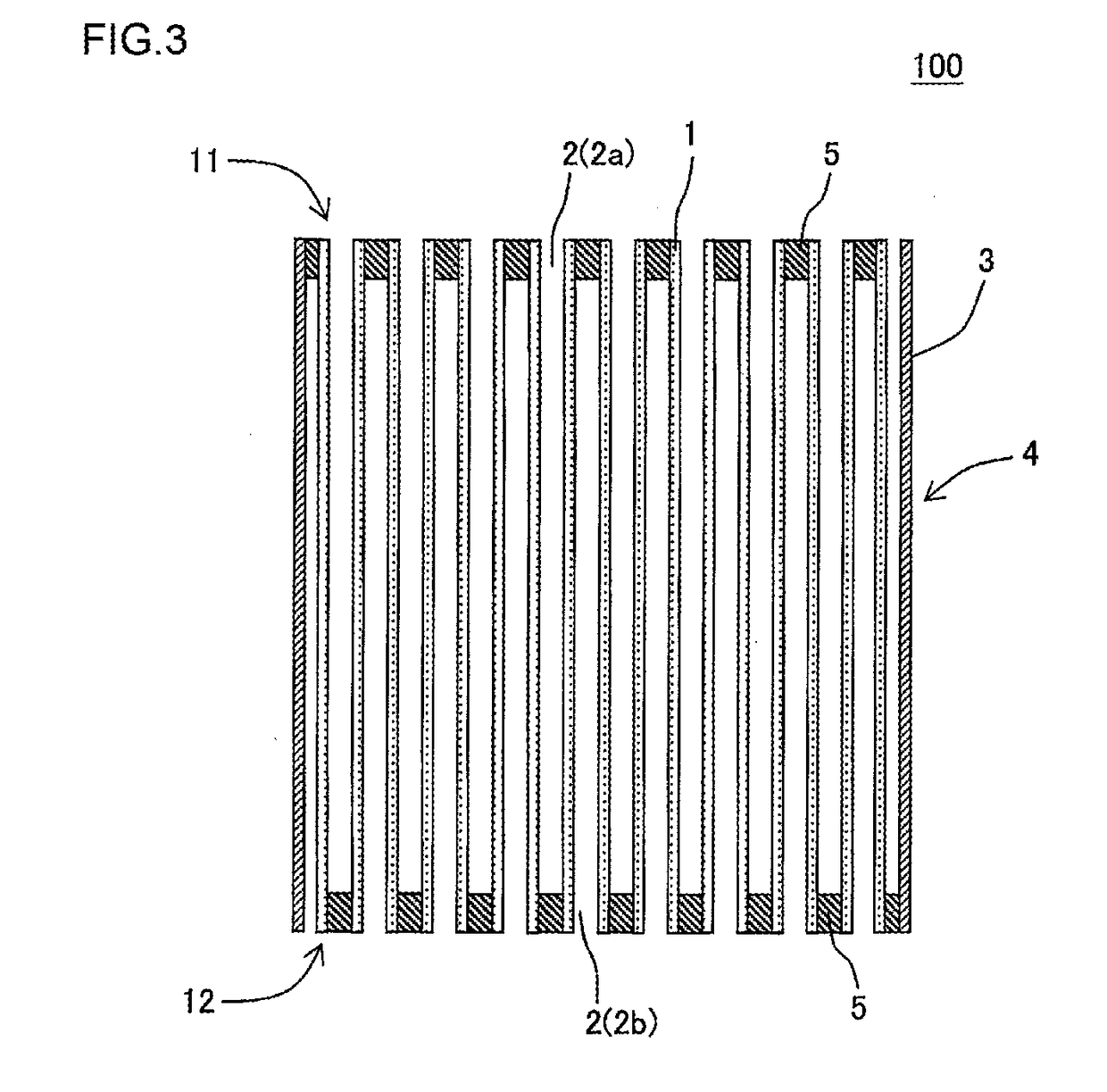Honeycomb structure
a honeycomb structure and honeycomb technology, applied in the field of honeycomb structure, can solve the problems of not taking into account the use state of the honeycomb structure as described above, and it is difficult to achieve simultaneous problems to increase the amount of catalyst, so as to reduce the amount of catalyst to be loaded, inhibit the increase and effectively reduce the effect of pressure loss during us
- Summary
- Abstract
- Description
- Claims
- Application Information
AI Technical Summary
Benefits of technology
Problems solved by technology
Method used
Image
Examples
example 1
[0064]20 parts by mass of pore former, 30 parts by mass of dispersing medium, 5 parts by mass of organic binder and 0.5 parts by mass of dispersing agent were added to 100 parts by mass of cordierite forming raw material, and mixed and kneaded to prepare a kneaded material. As the cordierite forming raw material, there were used alumina, aluminum hydroxide, kaolin, talc, and silica. Water was used as the dispersing medium, a foamable resin having an average particle diameter of 30 μm was used as a pore former, hydroxypropyl methylcellulose was used as the organic binder, and a surfactant was used as the dispersing agent.
[0065]Next, the kneaded material was extruded by using a honeycomb formed body preparing die, to obtain a honeycomb formed body having a round pillar shape as a whole. A cell shape of the honeycomb formed body was quadrangular.
[0066]Next, the honeycomb formed body was dried with a microwave drier, and further completely dried with a hot air dryer, and both end faces ...
examples 2 to 23
[0081]The procedure of Example 1 was repeated except that a cell structure of a honeycomb structure, pore characteristics and a shape of the honeycomb structure were changed as shown in Table 1, to prepare honeycomb structures. In Examples 2 to 23, a porosity was adjusted in accordance with an amount of a foamable resin and an amount of an organic binder. Furthermore, in Examples 2 to 23, a mean pore size was adjusted in accordance with particle diameters of the foamable resin, particle diameters of a cordierite forming raw material and a firing temperature. Furthermore, when Table 1 shows “quadrangular and octagonal” in a column of “cell shape” among columns of the cell structure, it is indicated that a shape of inflow cells is octagonal and a shape of outflow cells is quadrangular.
PUM
| Property | Measurement | Unit |
|---|---|---|
| thickness | aaaaa | aaaaa |
| thickness | aaaaa | aaaaa |
| pore size | aaaaa | aaaaa |
Abstract
Description
Claims
Application Information
 Login to View More
Login to View More - R&D
- Intellectual Property
- Life Sciences
- Materials
- Tech Scout
- Unparalleled Data Quality
- Higher Quality Content
- 60% Fewer Hallucinations
Browse by: Latest US Patents, China's latest patents, Technical Efficacy Thesaurus, Application Domain, Technology Topic, Popular Technical Reports.
© 2025 PatSnap. All rights reserved.Legal|Privacy policy|Modern Slavery Act Transparency Statement|Sitemap|About US| Contact US: help@patsnap.com



